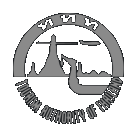Korea Times: Korea Times
2 December 2011 - Korea Times
Some 500 kilometers down south from Seoul, Korea's fourth largest island sits at the very tip of the Korean Peninsula. The tourism business in Namhae is nowhere near the scale of nearby Jeju, an island popular among honeymooners, but this has been more of a blessing than a curse.
Administratively attached to South Gyeongsang Province in the country's southeast, Namhae is home to more than 65 uninhabited islets and several notable mountains -- Mangun (786m), Geum (681m) and Won (627m). Roughly 50,000 residents live on the relatively less developed island, the landscape virtually untouched. Their link to the mainland is through the Namhae Grand Bridge, the country's first suspension bridge, built in 1973.
The drive over the bridge -- 770m long and 80m high -- leads to 302 kilometers of paved coastline road that runs along jagged cliffs and outstretched shoreline dotted with pension accommodations, quaint seaside townships and white-sand beaches.
"The island features plenty of tourist sites, many of which were largely made popular from hit TV dramas and movies," says Kim Yeon-kyung, manager of Namhae Tourism Center. For the fans of former popular American TV show "Lost," the island would be remembered as the hometown of the Korean character Jin-soo (Daniel Dae Kim).
Namhae, which claims 357.6 square kilometers, has been able to host an odd mixture of both tradition and modernism, aided by its image as a warm, lesser-known getaway perfectly suited for year-round golfing and vacationing because it hardly snows there. It has an edge over well-known Jeju because that island, the country's largest, is deemed too windy. This is why Hilton chose to build a golf and spa resort on the more obscure Namhae.
In terms of cultural attractions, Bori-am Hermitage and Daraengi Village provide invaluable insight into Korea's past, says Kim.
The former, shrouded deep in the forest and perched 681m above sea level on the craggy slopes of Mt. Geum, is a UNESCO World Heritage site, and a branch of Ssanggye Temple, one of the three main sanctuaries of Buddhism in Korea. Temple stay programs are offered here for visitors, allowing them to enjoy the sacred place's remote location.
Winding up behind Bori-am is a trail that leads to the summit of Mt. Geum, a mountain famous for its sunrises. The demanding climb rewards hikers with spectacular views of the surrounding islands and pristine landscape of Hallyeohaesang National Marine Park.
The Daraengi Village is a well-preserved traditional village at the base of Mt. Seolheul in the south. The area is known for its environmentally-friendly agriculture. Terraced rice paddies -- 108 steps held together with stones and soil -- lead down to the shoreline to create a stunning backdrop. The setting gives one a good idea of how Koreans lived over a half a century ago.
Garlic is grown in the spring and rice is grown during the summer and fall. The salty sea breeze is said to prevent pests from destroying the crops.
Namhae is expecting a big boon when its neighboring city Yeosu hosts the 2012 World Expo from May 12 to Aug. 12 next year. Hilton, accredited as a member of the World Expo Family, recently renovated its meeting and conference facilities at its resort on Namhae.
The resort hotel boasts an award-winning design with guest rooms and two-storied villas set on the cliff top above the sea, together with an 18-hold PGA championship course.
"Hilton Namhae Golf and Spa resort is putting a lot of effort into increasing the quality of our services as well as the facilities," says Helen Joung, assistant PR manager.
For the fifth year running, Hilton Namhae was designated as "Korea's Leading Golf and Spa Resort" this year, most recently at the 2011 World Travel Awards held in Bangkok. The award is one of the most highly-coveted honors in the tourism and travel industry.
Winners are chosen by thousands of votes cast by travel agents and tourism professionals across the globe.
The Namhae government in June spearheaded the development of a ferry terminal in Seosang Port. The massive 3.7 billion won facility will make travel in Korea's southern regions more convenient. Officials hope the new 20-minute ferry service between Seosang Port and Yeosu will encourage tourism in the area from Expo visitors and help put Namhae on the map as an international marine tourism city.
Administratively attached to South Gyeongsang Province in the country's southeast, Namhae is home to more than 65 uninhabited islets and several notable mountains -- Mangun (786m), Geum (681m) and Won (627m). Roughly 50,000 residents live on the relatively less developed island, the landscape virtually untouched. Their link to the mainland is through the Namhae Grand Bridge, the country's first suspension bridge, built in 1973.
The drive over the bridge -- 770m long and 80m high -- leads to 302 kilometers of paved coastline road that runs along jagged cliffs and outstretched shoreline dotted with pension accommodations, quaint seaside townships and white-sand beaches.
"The island features plenty of tourist sites, many of which were largely made popular from hit TV dramas and movies," says Kim Yeon-kyung, manager of Namhae Tourism Center. For the fans of former popular American TV show "Lost," the island would be remembered as the hometown of the Korean character Jin-soo (Daniel Dae Kim).
Namhae, which claims 357.6 square kilometers, has been able to host an odd mixture of both tradition and modernism, aided by its image as a warm, lesser-known getaway perfectly suited for year-round golfing and vacationing because it hardly snows there. It has an edge over well-known Jeju because that island, the country's largest, is deemed too windy. This is why Hilton chose to build a golf and spa resort on the more obscure Namhae.
In terms of cultural attractions, Bori-am Hermitage and Daraengi Village provide invaluable insight into Korea's past, says Kim.
The former, shrouded deep in the forest and perched 681m above sea level on the craggy slopes of Mt. Geum, is a UNESCO World Heritage site, and a branch of Ssanggye Temple, one of the three main sanctuaries of Buddhism in Korea. Temple stay programs are offered here for visitors, allowing them to enjoy the sacred place's remote location.
Winding up behind Bori-am is a trail that leads to the summit of Mt. Geum, a mountain famous for its sunrises. The demanding climb rewards hikers with spectacular views of the surrounding islands and pristine landscape of Hallyeohaesang National Marine Park.
The Daraengi Village is a well-preserved traditional village at the base of Mt. Seolheul in the south. The area is known for its environmentally-friendly agriculture. Terraced rice paddies -- 108 steps held together with stones and soil -- lead down to the shoreline to create a stunning backdrop. The setting gives one a good idea of how Koreans lived over a half a century ago.
Garlic is grown in the spring and rice is grown during the summer and fall. The salty sea breeze is said to prevent pests from destroying the crops.
Namhae is expecting a big boon when its neighboring city Yeosu hosts the 2012 World Expo from May 12 to Aug. 12 next year. Hilton, accredited as a member of the World Expo Family, recently renovated its meeting and conference facilities at its resort on Namhae.
The resort hotel boasts an award-winning design with guest rooms and two-storied villas set on the cliff top above the sea, together with an 18-hold PGA championship course.
"Hilton Namhae Golf and Spa resort is putting a lot of effort into increasing the quality of our services as well as the facilities," says Helen Joung, assistant PR manager.
For the fifth year running, Hilton Namhae was designated as "Korea's Leading Golf and Spa Resort" this year, most recently at the 2011 World Travel Awards held in Bangkok. The award is one of the most highly-coveted honors in the tourism and travel industry.
Winners are chosen by thousands of votes cast by travel agents and tourism professionals across the globe.
The Namhae government in June spearheaded the development of a ferry terminal in Seosang Port. The massive 3.7 billion won facility will make travel in Korea's southern regions more convenient. Officials hope the new 20-minute ferry service between Seosang Port and Yeosu will encourage tourism in the area from Expo visitors and help put Namhae on the map as an international marine tourism city.
Source: Korea Times





















